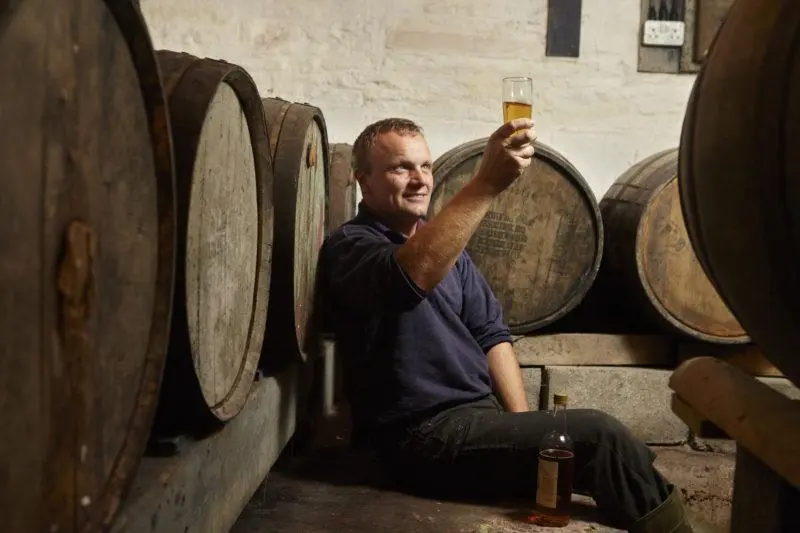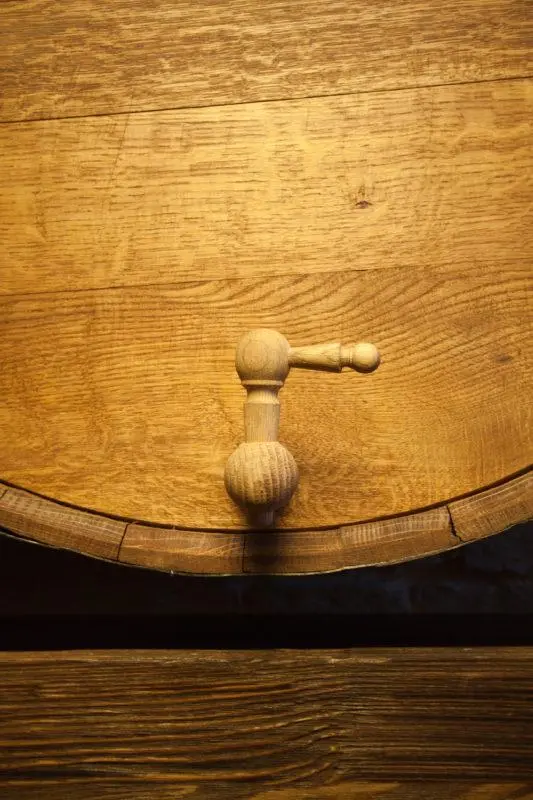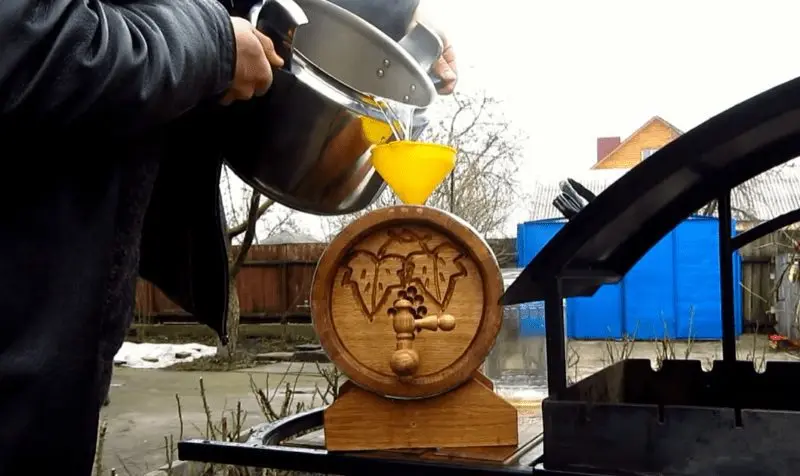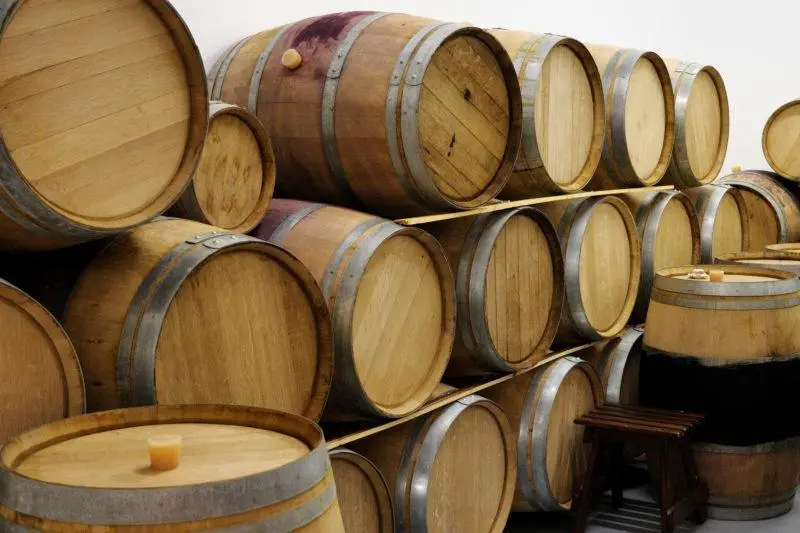Contents
Only a hypocrite can claim that real whiskey, calvados, bourbon or brandy cannot be made at home. Almost all drinks were first prepared in someone’s home, by ordinary people. And ordinary people came up with the idea of pouring their drinks into the barrel on their own. But first they learned how to prepare these barrels for use.
In general, it is difficult to imagine how the universe of alcoholic beverages would develop if one day someone did not come up with the idea of keeping them in a barrel. Without the influence of wood, the drink would simply become an ordinary distillate or wine. In its aroma, we would never catch notes of vanilla, coconut, coffee, cloves, toasted bread crust, smoke, tobacco and other things. We owe all this to oak barrel aging.
But one day someone said: “no, no, you can’t make a real noble drink at home, now only large distilleries should do it, now it’s not for everyone …”. No, of course I exaggerate, everything is actually not so bad. In recent years, people have become more conscious about homemade alcohol. This is confirmed, at least, by the popularity of our resource and others like it (although there are none like it :)). Now people know that almost any drink can be made at home, or at least a quality imitation can be made.

True, it’s one thing to cook Limoncello according to a traditional recipe or one of Yerofeichi, where you need a minimum of skill and equipment, and another to get something unique, with a claim to authentic whiskey, bourbon, calvados or cognac. Of course, you can cook a good, high-quality imitation. We have already written how to make ersatz rum, tequila or whiskey. But the drink will turn out to be much more interesting if you prepare it according to traditional technology, that is, first get the distillate from the raw materials we need, and then keep it in a barrel. After a short exposure, no one will dare to call such a drink “imitation”.
So, you have a delicious distillate made from grains, fruits, berries, or any other interesting raw material. It’s time to choose a good oak barrel and prepare it properly for use. Let’s start with this, but first we will tell you a little about the barrels themselves.
How to choose the right barrel for moonshine
Who and when invented the barrel is not known. It is authentically known that ancient Romans used oak barrels for transportation and storage of wines. For us, information of this kind does not carry any practical benefit, so we move on. The most important thing you need to know is that the smaller the barrel, the faster the maturation process of the drink. This is due to the fact that with an increase in the volume of the barrel, the area of contact of the drink with its inner surface decreases. For example, a 5 liter barrel has a contact area of about 2000 cm2, and this is 400 cm2 tree per 1 liter of drink. In a 50 l drum, the contact surface is only 7600 cm2 and the contact of 1 liter of drink accounts for only 152 cm2. Agree, the difference is big.
So, further in this article we will talk mainly about small cooperage products – barrels from 5 to 50 liters. On an industrial scale, such barrels are rarely used, but sometimes used. For example, some producers of Scotch whiskey age their distillate in small barrels with a volume of 45-68 liters, they are called octaves. In small barrels, metabolic processes occur much faster, and it takes much less time to age the drink. On the contrary, in a small barrel, a long exposure of the distillate is simply impossible – the angels are too voracious. If in a large barrel with a volume of 200 liters or more, the share of angels is 1,5-7% per year (subject to the conditions of aging) and this is not critical for such a volume, then for a keg of 5-50 liters, a loss of 200-500 ml per month is norm. After a couple of years of aging, such a barrel will be empty.
The share of angels is the part of alcohol that evaporates through the pores of the barrel during its aging and ranges from 1,5 to 7% per year.
To moderate the appetite of gluttonous angels, a barrel can (even need to) be waxed. Most coopers already offer waxed products to buyers of small barrels for home use – take it without hesitation, because it will be a little more difficult to wax a barrel yourself. I will not describe this process, there are detailed manuals, but it all comes down to acquiring wax, at the request of any natural oil, as well as a brush and a building hair dryer. Waxing allows you to reduce the proportion of angels to 200 ml / month without losing the required gas exchange by the barrel.
It should be understood that the larger the contact inner surface of the barrel, the faster the drink is saturated with tannins and flavoring substances. Next, very relative aging times for a 5-liter barrel will be given and I ask without criticism, these recommendations are not mine (valid for an aging temperature of 20-24оWITH):
- bourbon: 3-4 months
- Irish style whiskey: 6-8 months
- scotch style whiskey: 8-12 months
- calvados, brandy: 4-6 months
The exposure time is strongly influenced by environmental conditions. If you keep the drink in the apartment at a temperature of 20-24оC, the drink will mature faster. At the same time, if the barrel is provided with the necessary humidity in the region of 65-75%, then the proportion of angels will decrease, but the drink will lose its strength. In a dry place, the proportion of angels is greater, but the drink becomes stronger.

A wooden faucet for a barrel is often useless and always dangerous.
Now is the time to talk about the correct direction of the fibers in riveting, about chipped and sawn oak, but all this is a bit out of date in our time. Today, most orders are made via the Internet, therefore, when choosing a barrel, there is no way to check its quality, feel it, or look inside. Therefore, we have to be content with what has already arrived. Of course, split oak barrels are better, and if this is indicated in the product description, then such a barrel is in priority. But if it was not done qualitatively, then nothing will save it.
That is why you need to buy from a trusted cooper, who has good reviews on the forums.
But a few words should be said about the type of wood. Of course, oak is the best material for barrels, as it has the right porosity and strength. But oak is different from oak. There are about 300 species of this mighty tree, and only three of them are used commercially in Europe and North America: European sessile oak (quércus pétraea) and pedunculate oak (quércus róbur), as well as white oak (quercus alba) native to North America . French oaks are considered ideal for aging noble drinks, but American oak is good for whiskey, so American oak barrels, after aging bourbon in them, are bought to Scotland for aging scotch.
Nevertheless, the world did not converge on these three varieties. Not bad barrels are obtained from oak, which grows in Serbia (Quercus peduncolator, “Slavonian oak”), Hungary, Slovenia, Bulgaria, Russia and Ukraine. Yes, they may not be very suitable for refining wines, but for home use, especially for refining brandy and bourbon, “oaks not from French forests” are ideal due to their cheapness. I won’t talk about other wood yet, the subject of the article is not the same, but you can look in the direction of barrels made of mulberry, cherry and acacia.
Barrel boards are dried in two ways: in drying chambers and in the open air (terroir drying). The most expensive French barrels are made from boards dried in a terroir way for 3-4 years.
And of course roasting. Not all barrels are fired, but if we are talking about cheap oak, then firing allows you to compensate for its inability to fully “ennoble” the drink. Fired barrels change their character, certain flavors and aromas are released. For example, different degrees of firing will provide:
- Light firing – subtle vanilla, floral notes, ripe fruits. A good roasting for white wines that often have a neutral aroma, such as Chardonnay.
- Medium firing – richer vanilla, coconut, spices, caramel, almonds and toasted bread crust. Ideal firing for full-bodied wines, brandy, Calvados.
- Strong firing – chocolate, cocoa, smoke. Excellent for bourbon, port, sherry, and then for Scotch whiskey and calvados.

A few words about hoops and you can sum it up. Most often, hoops are made of steel or brass. Untreated steel is highly susceptible to corrosion, so it quickly loses its appearance and can even harm the contents. It is better to choose products with hoops made of stainless or galvanized steel, brass. However, this is all poetry. Often we have what we have. That’s much more important, if possible, to order a barrel without a tap. The faucet is the most vulnerable point in any barrel, and its practical side is highly questionable. But if you were not given such a choice, then in no case leave a metal tap. It is better to plug the hole with a wooden cork.
So, let’s summarize briefly.
A good barrel for home use would be a product:
- volume from 5 to 50 liters, no more;
- from split oak from Serbia (ideal, but expensive), Hungary, Slovenia, Bulgaria, Russia and Ukraine (especially from the Ivano-Frankivsk region);
- waxed, and if not, then it is better to wax the barrel yourself;
- with medium or strong firing;
- without faucet or only with wooden faucet;
- with hoops made of stainless or galvanized steel.
Whether you succeed in following my advice or not is not important. The barrel is already in your hands and you immediately want to pour distillate or wine into it. Don’t be in a hurry. The barrel must first be prepared.
Preparing a new oak barrel for moonshine and other things
First of all, preparing an oak barrel for whiskey, cognac, moonshine, bourbon, calvados and other strong alcoholic drinks is much easier than preparing a barrel for wine. I don’t think it’s worth explaining here. Further, everything written refers only to the preparation of a barrel for strong alcoholic drinks, and for winemaking … well, some other time.
So, for starters, make sure that the barrel is well assembled: the hoops sit tight on it and there are no through slots in it. If there is a problem with hoops, they need to be reined in. To do this, take a scarpel or a chisel and use a heavy hammer to tap the hoops in small steps in a circle, from the central hoops to the outer ones. If you yourself had to wax the barrel, then the hoops should be upset after waxing. But if you find it difficult to do all this, it is better to send this barrel back and ask the cooper to replace it, if possible.
If the barrel is assembled well and the hoops sit tightly on it, it can be immediately filled with water. This is necessary so that the staves of the barrel absorb moisture, swell and sit tighter. So the barrel will stop leaking. The easiest way: fill the barrel with water completely and leave it for a couple of weeks, remembering to change the water every 4-6 days so that the water does not deteriorate. Then the water must be replaced with some alcohol-containing liquid of at least 18% strength. It’s all very simplistic and somehow unprofessional. Therefore, I propose a no less simple, but more technologically advanced, proven method of soaking a barrel with water.
Soaking the barrel with water
- Pour 1/3 cold water into the barrel, wait 3-4 hours and drain it.
- Pour 2/3 cold water into the barrel, wait 3-4 hours again and drain it.
- Finally, fill the barrel to capacity, seal it with a cork and keep it in water for up to 5 days until it stops leaking (usually it takes no more than 2 days). As water flows out, it must be topped up so that the barrel is always full.
The procedure, as you can see, is not too troublesome and, as a rule, gives the desired result. If a new oak barrel leaks after 5 days, then something is clearly wrong with it and you need to repair it. You can again try to upset the hoops, wax the joints, etc. Here, rely on your skill and imagination. Many coopers also recommend soaking barrels with a weak solution of soda (20 g per 1 liter of water), but if you are going to withstand strong alcohol in it, then this procedure is not necessary.

The barrel can be soaked either with cold or warm or hot water, there is almost no difference. You can also steam the barrel, but it is time consuming and not everyone can do it, so I will miss this method. So, the barrel is soaked and does not leak. You can immediately pour our distillate into it and get an aged drink in just a couple of months. A terrible drink, which in the narrow circles of moonshiners is called “skirting”. The fact is that after soaking, the barrel is not yet ready to ennoble the drink. It has too much tannins and other things.
Soaking the barrel with alcohol-containing liquid
You can soak the barrel with alcohol-containing liquid for a long time and do not need to mess around. Simply pour raw alcohol, any distillate of the first or second stage into a keg swollen with water, you can even heads and tails from grain or fruit distillate (sugar is too smelly for this). The main thing is that the liquid has a strength of at least 18% (but not more than 55%). It is also possible, and perhaps even preferable, to pour fortified wine into the barrel, in particular port or sherry. Wine after soaking will have to be distilled or poured out, but drinks aged in such a barrel will acquire a very pleasant taste and aroma.
The soaking time depends on many factors and it’s up to you to decide, but the following terms are recommended:
Barrels of 25-50 l:
- for bourbon: 3 months;
- for whiskey: 4-5 months;
- for Calvados and CognacA: 5-6 months.
Barrels of 5-15 l:
- for bourbon: 1-2 months;
- for whiskey: 2-3 months;
- for Calvados and CognacA: 3-4 months.
Pouring into a barrel of distillate and its exposure
It is advisable to fill the barrel in the process of aging the drink in it completely. For the first six months, if this is the aging period, make it a rule to try the aged distillate every 3-4 weeks. If you feel that there is too much oak in the drink, pour it into a glass container, and soak the barrel with an alcohol-containing liquid for another month or two. Then return the distillate and keep tasting. If you missed it and the aged distillate “went through” the tannin, it can be overtaken without the selection of heads and tails, and then returned to the barrel – losses are minimal.
Given the above, you can cheat and shrink the time. After the main soaking of the barrel with alcohol-wine, bourbon can be poured into it. As you know, Americans age bourbon in new charred barrels, so we don’t break the rules here. After bourbon, whiskey or Calvados can be poured into the barrel – as you know, many producers of Scotch whiskey buy barrels from the States after bourbon has been aged in them. It turns out that here we have not violated anything. As practice shows, in a new barrel you can age 2-4 times bourbon, then 2-4 times whiskey, and then an unlimited number of times calvados. Cognac is best poured into a new barrel and then kept in it only cognac or calvados. Here’s the math.
Another life hack: if the barrel has ceased to “ennoble” the drink due to its old age, add prepared oak chips or wood chips to it. Or restore the barrel by firing. By the way, how to prepare and use wood chips, as well as what an oak barrel generally brings to the drink, is described in the article on preparing another imitation, cognac. I recommend reading.
Finally, I would like to describe the ideal storage conditions for the barrel during the aging of drinks in it:
- ideal humidity: 70-80%
- absence of drafts
- muffled light
- temperature from 10 to 16оС
In other words, the cellar for this, as always, by the way.

If you properly prepare the barrel for use and properly exploit it, it will serve you indefinitely and give you a huge amount of delicious, outstanding drinks. Imitation is imitation, but to make a truly authentic drink with your own hands …
It’s worth a lot!









